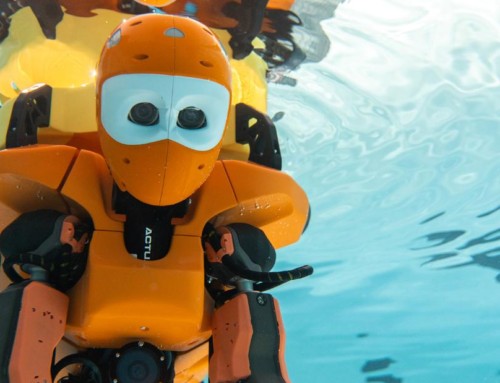[ad_1]
We’ve seen movies where robots and artificial intelligence (AI) have stolen people’s hearts like “Her,” “Robot and Frank,” and even that 1986 gem “Short Circuit,” but those feelings have begun to creep over into some people’s lives. Just think about how reliant we’ve all become on some form of AI. Our homes are getting ‘smarter,’ but are we getting dumber as we rely on those systems? How many of you can get to a simple location now without the assistance of your GPS?
When something creeps into our lives this much, what happens when they suddenly disappear? Yes, people are now finding themselves having real feelings towards robots and AI.
When a robot
“dies,” does it make you sad? For lots of people, the answer is “yes” — and
that tells us something important, and potentially worrisome, about our
emotional responses to the social machines that are starting to move into
our lives.
For Christal White, a
42-year-old marketing and customer service director in Bedford, Texas, that
moment came several months ago with the cute, friendly Jibo robot perched in
her home office. After more than two years in her house, the foot-tall humanoid
and its inviting, round screen “face” had started to grate on her. Sure, it
danced and played fun word games with her kids, but it also sometimes
interrupted her during conference calls.
White and her husband
Peter had already started talking about moving Jibo into the empty guest
bedroom upstairs. Then they heard about the “death sentence” Jibo’s maker had
levied on the product as its business collapsed. News arrived via Jibo itself,
which said its servers would be shutting down, effectively lobotomizing it.
“My heart broke,” she
said. “It was like an annoying dog that you don’t really like because it’s your
husband’s dog. But then you realize you actually loved it all along.”
The Whites are far from the
first to experience this feeling. People took to social media this year to say teary
goodbyes to the Mars Opportunity rover when NASA lost contact with the
15-year-old robot. A few years ago, scads of concerned commenters weighed in on
a demonstration video from robotics company Boston Dynamics in which employees
kicked a dog-like robot to prove its stability.

Smart robots like Jibo
obviously aren’t alive, but that doesn’t stop us from acting as though they
are. Research has shown that people have a tendency to project human traits
onto robots, especially when they move or act in even vaguely human-like ways.
Designers acknowledge that
such traits can be powerful tools for both connection and manipulation. That
could be an especially acute issue as robots move into our homes — particularly
if, like so many other home devices, they also turn into conduits for data collected on their owners.
“When we interact with
another human, dog, or machine, how we treat it is influenced by what kind of
mind we think it has,” said Jonathan Gratch, a professor at University of
Southern California who studies virtual human interactions. “When you feel
something has emotion, it now merits protection from harm.”
The way robots are
designed can influence the tendency people have to project narratives and
feelings onto mechanical objects, said Julie Carpenter, a researcher who
studies people’s interaction with new technologies. Especially if a robot has
something resembling a face, its body resembles those of humans or animals, or
just seems self-directed, like a Roomba robot vacuum.
“Even if you know a robot
has very little autonomy, when something moves in your space and it seems to
have a sense of purpose, we associate that with something having an inner
awareness or goals,” she said.
Such design decisions are
also practical, she said. Our homes are built for humans and pets, so robots
that look and move like humans or pets will fit in more easily.
Some researchers, however,
worry that designers are underestimating the dangers associated with attachment
to increasingly life-like robots.
Longtime AI researcher and
MIT professor Sherry Turkle, for instance, is concerned that design cues can
trick us into thinking some robots are expressing emotion back toward us. Some
AI systems already present as socially and emotionally aware, but those
reactions are often scripted, making the machine seem “smarter” than it
actually is.
“The performance of
empathy is not empathy,” she said. “Simulated thinking might be thinking, but
simulated feeling is never feeling. Simulated love is never love.”
Designers at robotic
startups insist that humanizing elements are critical as robot use expands.
“There is a need to appease the public, to show that you are not disruptive to
the public culture,” said Gadi Amit, president of NewDealDesign in San
Francisco.
His agency recently worked
on designing a new delivery robot for Postmates — a four-wheeled, bucket-shaped
object with a cute, if abstract, face; rounded edges; and lights that indicate
which way it’s going to turn.
It’ll take time for humans
and robots to establish a common language as they move throughout the world
together, Amit said. But he expects it to happen in the next few decades.
But what about robots that
work with kids? In 2016, Dallas-based startup RoboKind introduced a robot
called Milo designed specifically to help teach social behaviors to kids who
have autism. The mechanism, which resembles a young boy, is now in about 400
schools and has worked with thousands of kids.
It’s meant to connect
emotionally with kids at a certain level, but RoboKind co-founder Richard
Margolin says the company is sensitive to the concern that kids could get too
attached to the robot, which features human-like speech and facial expressions.
So RoboKind suggests
limits in its curriculum, both to keep Milo interesting and to make sure kids
are able to transfer those skills to real life. Kids are only recommended to
meet with Milo three to five times a week for 30 minutes each time.
[ad_2]
Source link





Leave A Comment
You must be logged in to post a comment.